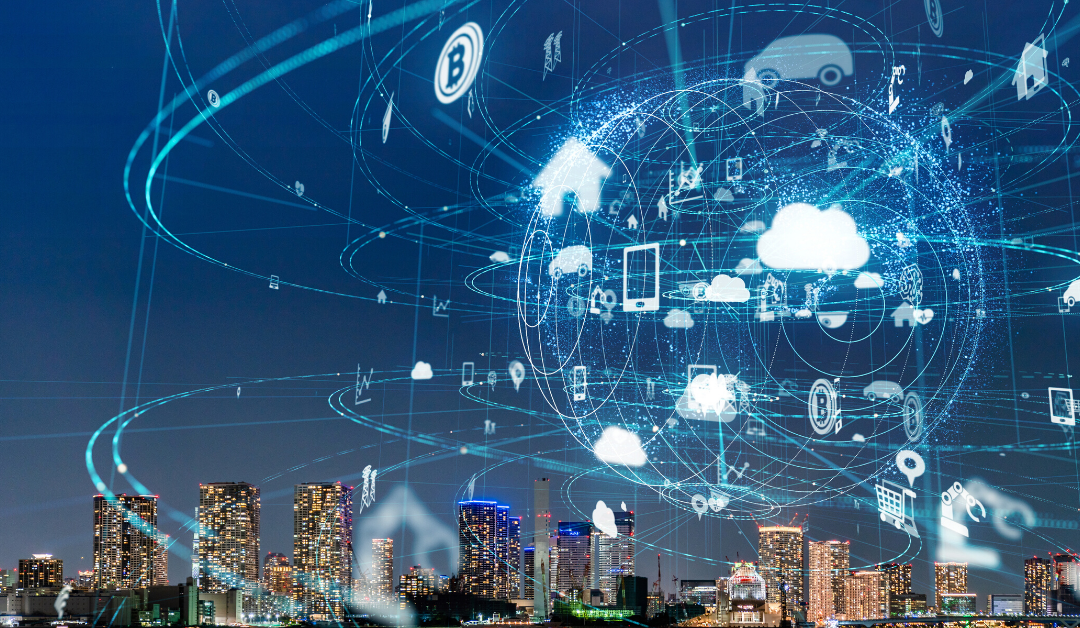Thanks to 5G and the Internet of Things (IoT), smart cities are becoming a reality worldwide. These cities of the future bring infrastructure and technology together with the goal of improving the quality of life for its citizens and enhance interactions with the urban landscape.
IoT is a key part of the smart technology movement. It allows entities like smart fridges, self-driving cars, home assistants, smart speakers, and more to connect to each other through the internet. This network of smart devices creates a perfect opportunity for technological innovation on a much larger scale.
Smart cities use sensors, actuators, and other technologies to connect components across the entire city. This guarantees that cities are fully connected from the air, to the street, and even underground. Due to these advancements, improvements to public transportation, traffic reports, real-time energy consumption, and more can be made.
Smart Cities: Efficiencies
While the current COVID-19 pandemic has shifted society to self-quarantine and social distance, it is important to consider traffic and congestion for when the crisis has passed and how 5G and IoT can help. In cities and communities around the world, the biggest driver of traffic congestion is people. Whether that’s residents or visitors, people are driving around, looking for an open parking spot. With the use of a mobile app, there are sensors that can be displayed to show exactly where a spot is open. No more searching is required.
Another efficiency is real-time traffic monitoring. Connected traffic lights can make all the difference. They receive information from sensors and cars from the road in real-time. This exchange of information makes it easy to change the light cadence and timing to relieve road congestion. The New York City Department of Transportation is already utilizing this technology with its Midtown in Motion congestion management system.
The Netherlands has been testing the use of IoT-based infrastructure in Amsterdam since 2009 when it began its Smart City initiative. Energy usage, traffic flow, and public safety are all monitored and can be adjusted in real-time. The city shares its traffic and transport data to create mapping apps that directly connect to the city’s transportation systems. This important information makes navigating the city easy.
What’s Next?
While smart cities are becoming more common, the introduction of 5G will play a large role in widespread adoption. The first building block of any smart city is reliable, wide-spread wireless connectivity. Another consideration is the ability to monitor and make decisions that involve advanced, low-latency applications. Big data analytics and real-time video and information sharing is a requirement. 5G promises to bring the necessary connectivity.
5G will serve as the foundation for networks that will power the next generation of wireless infrastructure. The connectivity and computing capacity that 5G enables will make smart cities a reality, allowing cities to utilize new technologies for smart city solutions.
Moving the concept of a smart city from theory to reality was because the speed and bandwidth requirements to handle the amount of data created by the IoT were not available. 5G is changing that and soon, cities across the world will be implementing smart city technology, keeping their citizens safer and changing the infrastructure of the with better living through technology.

